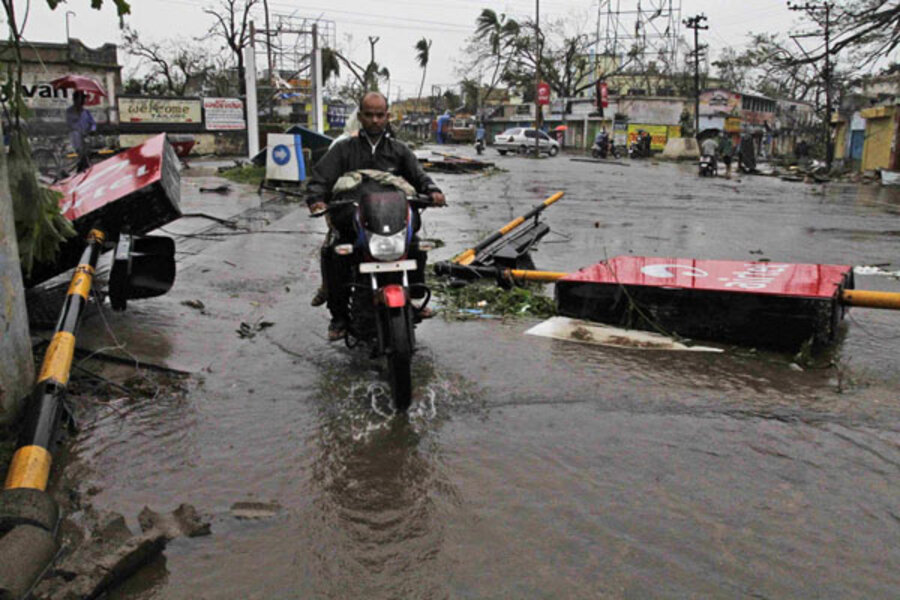In India, Cyclone Phailin's devastation tempered by planning
Loading...
| New Dehli
India heaved a sigh of relief as Cyclone Phailin hit its east coast but left very few casualties, thanks to a speedy mass evacuation of nearly a million people. The official death toll of 14 so far includes 7 who died after being hit by falling trees before the cyclone hit. As rescue officials reach remote areas, the death toll is expected to climb but not top 100.
While any loss of life is tragic, the coordination of early warning with a proactive mass evacuation is a rarity in India. Though the cyclone was not as powerful as some meteorologists had feared, a much greater loss of life was avoided by what is being described as the largest pre-disaster evacuation in India's history. The Odisha cyclone of 1999 in the same area left roughly 10,000 people dead.
This time the state of Odisha evacuated 900,000 people and the state of Andhra Pradesh evacuated 100,000 from flood prone coastal areas over 24 hours. The evacuation was in contrast to heavy rain and landslides in the northern hill-state of Uttarakhand in June, which killed 6,000 people as weather warnings were not heeded and evacuation plans were not in place.
Cyclone Phailin has been categorized as "very severe," equivalent to a Category 4 hurricane in the US. The Indian Meteorological Department said that American forecasters' warnings of a Hurricane Katrina-like Category 5 "super-cyclone" were proven wrong. There is no difference between a "hurricane" and a "cyclone" except their geographical origin. "Cyclone" is the preferred term for this type of storm across much of the Indian Ocean; "hurricane" is preferred for storms originating in the Atlantic and northern Pacific.
Air and train service began being resumed in the affected areas on Sunday morning. Mobile phone networks and power are likewise being restored.
"Clearly a lot has been learnt from the 1999 experience," says Sushil Kumar, a federal government official who has dealt with disaster management for years, including a stint with the United Nations Development Programme. Following the 1999 cyclone "the state and federal governments, along with UNDP, World Bank and other civil society organizations, put in place measures to minimize damage from the next cyclone. That is showing," says Mr Kumar.
The measures include early warning from the meteorological department and making sure the warnings reach the remotest villages in time for them to flee. Thousands of cyclone shelters came to the rescue of people to spend the night between Saturday and Sunday, which some have described as being like experiencing non-stop earthquake tremors for hours.
While lives have been saved, Phailin has left massive economic damage in its wake. Cyclonic winds, heavy rains and flooding have destroyed over 500,000 hectares of crops worth an estimated 24 billion Indian Rupees ($395 million), according to Odisha’s disaster management minister, S.N. Patro. Picking up the pieces will be hardest for the poor whose mud-and-thatch houses have been swept away.
"Credit must be given to the government for this first of its kind prevention of large scale death in a natural calamity," says Sunita Narain, director of the Centre for Science and Environment in Delhi. "However, we now need to move to the next scale to see how we can minimize economic damage from the next cyclone. We will see extreme weather events more often thanks to climate change, and should be better prepared."
SC Sahu, director of the Odisha Meteorological Department, says that technology played an important role this time. "Back in 1991 we did not have the ability to make models that would accurately predict weather for seven days. Today we do, and we had enough time to save lives," he says.








